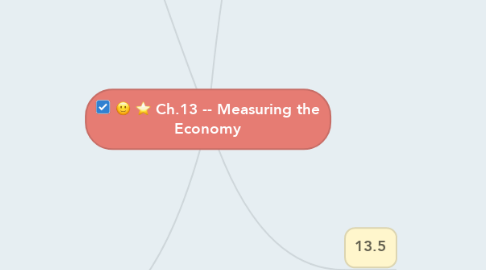Ch.13 -- Measuring the Economy
by NAUDIA FALCON


1. How Does the Business Cycle Relate to Economic Health?
1.1. The inflation rate is measured by the BLS based on information about Americans cost of living
1.2. Inflation has economic costs such as, less purchasing power, less efficient economy, and higher interest rates
1.3. There are three types of inflation, creeping inflation- gradual, hyperinflation- rapidly, and deflation- opposite
1.4. Cost-Pull Inflation is the rise in price of goods/services caused by increases in the cost of factors of production
1.5. Demand-Pull Inflation is the rise in price of goods/services caused by increases in overall demand
2. What Does the Unemployment Rate Tell Us About an Economy's Health?
2.1. There are four different types: Frictional Structural Seasonal Cyclical
2.2. Unemployment Rate; percentage of labor force actively seeking work
2.3. The Bureau of Labor Statistics (BLS) measures the number of people who are unemployed each month, those who do not fall under unemployment
2.4. High unemployment; lost potential output from economy, society suffers from less contribution, and unemployed workers pay an economic cost
3. 13.3
4. 13.4
5. What Does the Inflation Rate Reveal About an Economy's Health?
5.1. There are four phases to the business cycle: expansion, peak, contraction, and trough
5.2. Business cycles are irregular/ unpredictable for length and severity
5.3. The business cycle is essentially boom and bust
5.3.1. Boom is known as expansion, if boom turns to bust, it's known as contraction, if bust (recession) lasts a long time it becomes a depression and is very harmful to the economy

